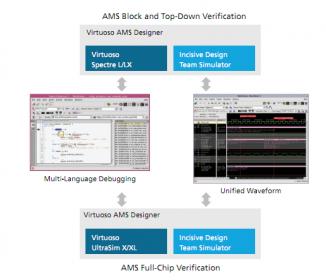In my dad’s generation they tweaked cars to become hotrods while in EDA today we have companies that tweak SPICE circuit simulators to become crowned speed champions. The perennial question though is, “How fast and accurate is my SPICE circuit simulator?”
When I marketed a Fast SPICE tool I would ask users, “Do you want fast wrong answers or fast correct answers?”
Yes, that question would get some chuckles, but it drives home the point that if you trade off too much accuracy for speed then the results can be wrong enough to cause another silicon spin or just give you very low yielding silicon.
EDA companies are very protective over allowing published results of their tools and have their legal departments write a license agreement that typically prohibits all public sharing of benchmarking results. The one place that you do tend to read public benchmark data about SPICE circuit simulators is over at John Cooley’s DeepChip web site where there were three recent posts about the speed of Berkeley DA’s Analog Fast SPICE (AFS) tool, all anonymous to protect the engineers.

Speed Results
In the first post we read that for a Comparator Offset design running in Monte Carlo that the Berkeley AFS simulator was 3.15X faster than Cadence Spectre. A transient analysis simulation then showed Berkeley AFS was 17.4X faster than Cadence Spectre. The speed gap increased even more to 29.8X faster for Berkeley AFS when transient noise analysis was run.
My conclusion from reading these results is that Berkeley AFS is a newer circuit simulator written from scratch to be accurate and faster than traditional SPICE. Cadence Spectre was fast enough when first introduced to gain market share away from then leader HSPICE, but as time goes on you have to update your algorithm or in some cases totally start over from scratch in order to stay competitive.
Both Berkeley DA and Cadence offer SPICE tools that exploit multi-core technology and the speed improvements over a single core are usually sub-linear.
The second post also came from the same event hosted by Berkeley DA at TechMart in Santa Clara this summer, here the user reported an 18X speedup with Berkeley DA AFS over Cadence Spectre. A complete SerDes netlist was run in AFS taking less than 29 hours, however Spectre never converged so we didn’t get a direct speed comparison. DC convergence can be so tricky that some SPICE vendors let you choose from a family of numerical algorithms, so maybe they didn’t try all convergence options in Spectre. The third comparison was on a PLL where AFS was about 18X faster than Spectre at the same accuracy. A final comparison on a VCO running in transient showed a 9X speedup with AFS.
Finally in the third post Nandu Bhagwan from Analog Bits showed that his PLL design simulated to within 1% accuracy of Berkeley DA AFS. This to me is the most meaningful accuracy comparison of SPICE versus silicon, instead of my SPICE versus your SPICE. IC designers build real chips and the real accuracy is the measured results versus silicon.
Conclusions
All SPICE circuit simulators let you trade off between speed and accuracy, so learn your circuit simulator settings and then run a regression against dozens of circuits instead of just one topology. It appears that Cadence Spectre needs to play some catch up on speed, especially against Berkeley DA.
Cadence on the other hand has integrated Spectre with their HDL simulator so that you can simulate RTL along with transistors:

This is something that Berkeley DA cannot really do to the same level because they rely on the clunky Verilog API to integrate.
I don’t know what the exit strategy is at Berkeley or if the corporate cultures are even compatible, but it would make sense for Cadence to acquire Berkeley DA just to get more competitive in SPICE again. Stay tuned.
Visit the wiki page on SPICE and Fast SPICE circuit simulators.
Share this post via:








Quantum Computing Technologies and Challenges